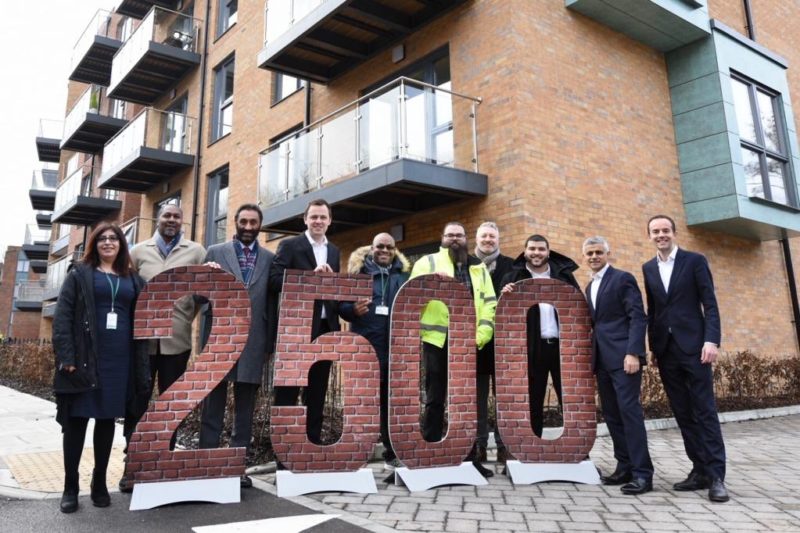
By Cllr Peter Mason, Cabinet Member for Housing, Planning and Transformation
The tall buildings proposed for Ealing’s skyline are the consequences of an overheated housing market that has failed to deliver the genuinely affordable homes London’s growing economy needs to house its workers.
An increase in the number of schemes being proposed by private developers has understandably caused concern within the communities they will impact.
Last year, New London Architecture estimated that across London, as many as 541 tall towers were either proposed for or had been given planning permission. Of this figure, approximately 450 were proposed to be residential.
Like Brent’s 21, Barnet’s 22 and Wandsworth’s 23, Ealing’s tall buildings stand at a figure of 24. In South and East London the numbers are much higher: Croydon at 30, Newham with 39 and Greenwich at 64.
To understand why tall buildings are becoming more and more common in development proposals in London, we need to take a closer look at London’s affordable housing crisis.
Despite lots of talk about ‘levelling up’ other parts of the country, most of the growth the UK’s economy has experienced since the financial crash has taken place inside the M25. London remains the UK’s economic engine room, and one of the consequences of this growth is the incredible pressure placed on London Boroughs to house ever increasing numbers of workers.
With London constrained by the green belt and with Conservative home counties refusing to play their part in providing for London’s housing overspill, unsustainable pressure is placed on what little land London can provide to deliver the homes required. The lack of supply and surge in demand has also pushed land prices in Boroughs like Ealing sky high, whilst the benefits we enjoy from investments into infrastructure like Crossrail also encourage developers to take advantage of decreased journey times for commuters.
Local councils face a range of challenges in this situation.
Firstly, the national planning rules we are governed by prioritise private profit before public good. Since the introduction of financial viability rules, developers are in effect guaranteed the right to enjoy profits from development of as much as 22%. In practice, this means they have a legally binding ability to argue that if their schemes don’t stack up financially, they can cut back on the affordable homes they build and the investments in infrastructure, schools and healthcare that we ask for.
Secondly, ever since the 1980’s, and Thatcher’s dismantling of the social housing sector, local authorities have been starved of the funding they need to build the next generation of council housing. As a council we have begun the process of reversing that trend with our municipal house building company, Broadway Living. But without the funding we need, the private sector will continue to build the overwhelming majority of new homes in Ealing, London and the rest of the country.
Finally, as a local council, Ealing is required to operate in a planning system where the real power to control development sits with central and regional government. And when national government believes the free market is the answer. we see progressive deregulation of the planning system, allowing the private sector to avoid or ignore their social and moral obligations to the communities they’re building in.
Facing these challenges, Ealing has to negotiate hard. When private developers propose new schemes, we do everything we can to get the best possible development, maximise genuinely affordable homes, and get the money we need to make improvements for the community, to fund schools and support our health service.
But these hard talks always take place in the knowledge that if a developer doesn’t want to play ball, they have the power and the mechanisms to have our decisions overturned. For every decision we turn down, when we know that we will be overturned at appeal, the Council effectively writes a blank cheque made payable to property lawyers, planning consultants and chartered surveyors. With growing homelessness, and ever more demand for social care, it is impossible to justify spending hundreds of thousands of pounds defending futile decisions instead of vulnerable people.
As recently as January this year, the Conservative Secretary of State announced that major schemes in Lewisham and Southwark could go ahead despite being rejected by those councils because they provided too few affordable homes. When Ealing rejected the Marshall Building in Hanwell, our decision was also overturned by a Government inspector.
Ealing Council does not want a tall tower free-for-all. Nor do we want to be stripped of the few powers we do have to control developments if we fail to meet the Government’s imposed housing delivery test.
We have been clear to developers that we will only consider tall buildings in areas that can support them, such as at major transport hubs, like North Acton, where a cluster of tall buildings will sit at the southern edge of the major regeneration of the area surrounding the Old Oak Common Crossrail and HS2 interchange.
Where developers propose schemes that are too tall, like in locations at South Acton, West Ealing and Southall, we will tell them so. In the last few months alone, a number of developers have been told directly that heights need to come down and more affordable homes need to be delivered before their plans can get off the ground.
When London faced its last major affordable housing crisis after the Second World War, we collectively set about tackling the shortage of homes and the growth of urban slums by building the suburbs. Seventy years later, the scale of the challenge we face is a different one – but as important.
This year Ealing will be launching our review of our Local Plan. We will be engaging the community in a big conversation about how we can manage population, jobs and housing growth in the Borough, at the same time as considering how we tackle the climate crisis and growing wealth inequality in our city.
If we are unable as a country or a city to have a conversation about how we grow London sustainability outwards, or to take action to grow other parts of the UK’s economy and relieve pressure on the demand for homes in London, it is inevitable that we need to talk about how we grow London upward to have any hope of tackling the worsening affordable housing crisis in our city.

